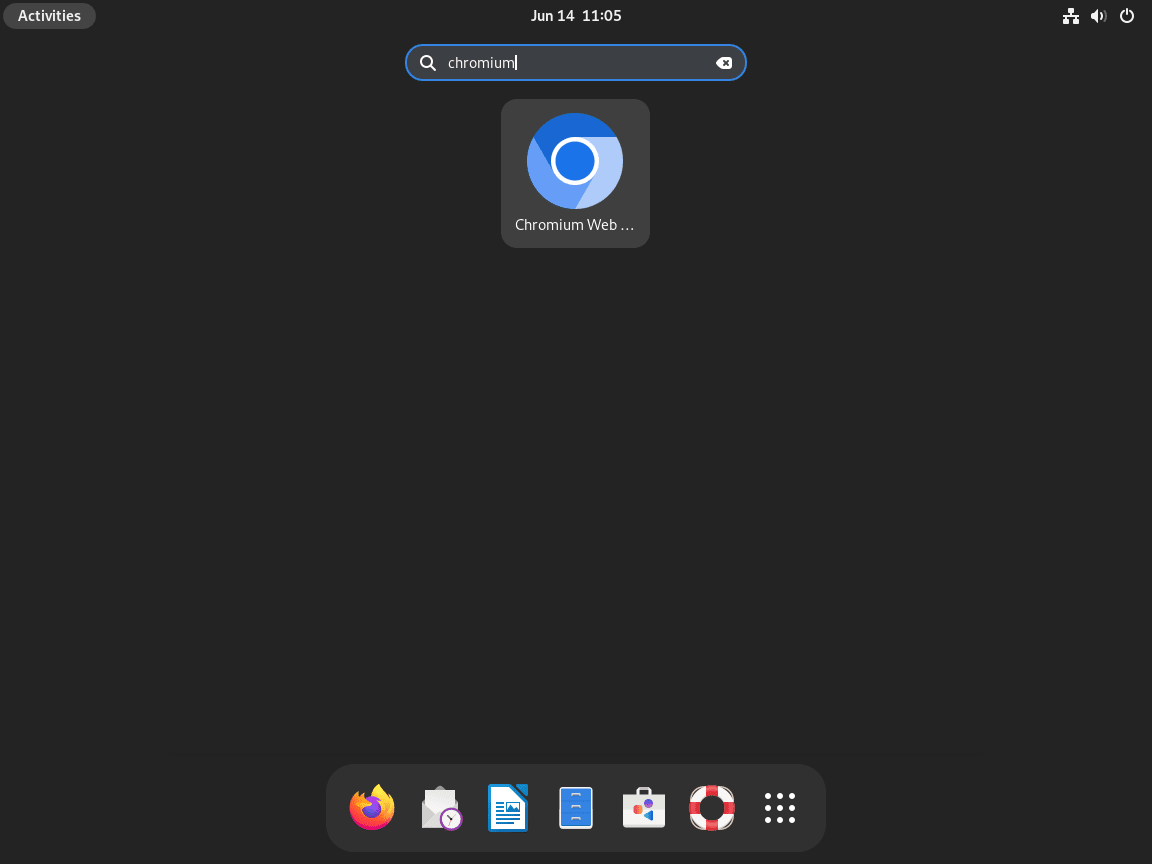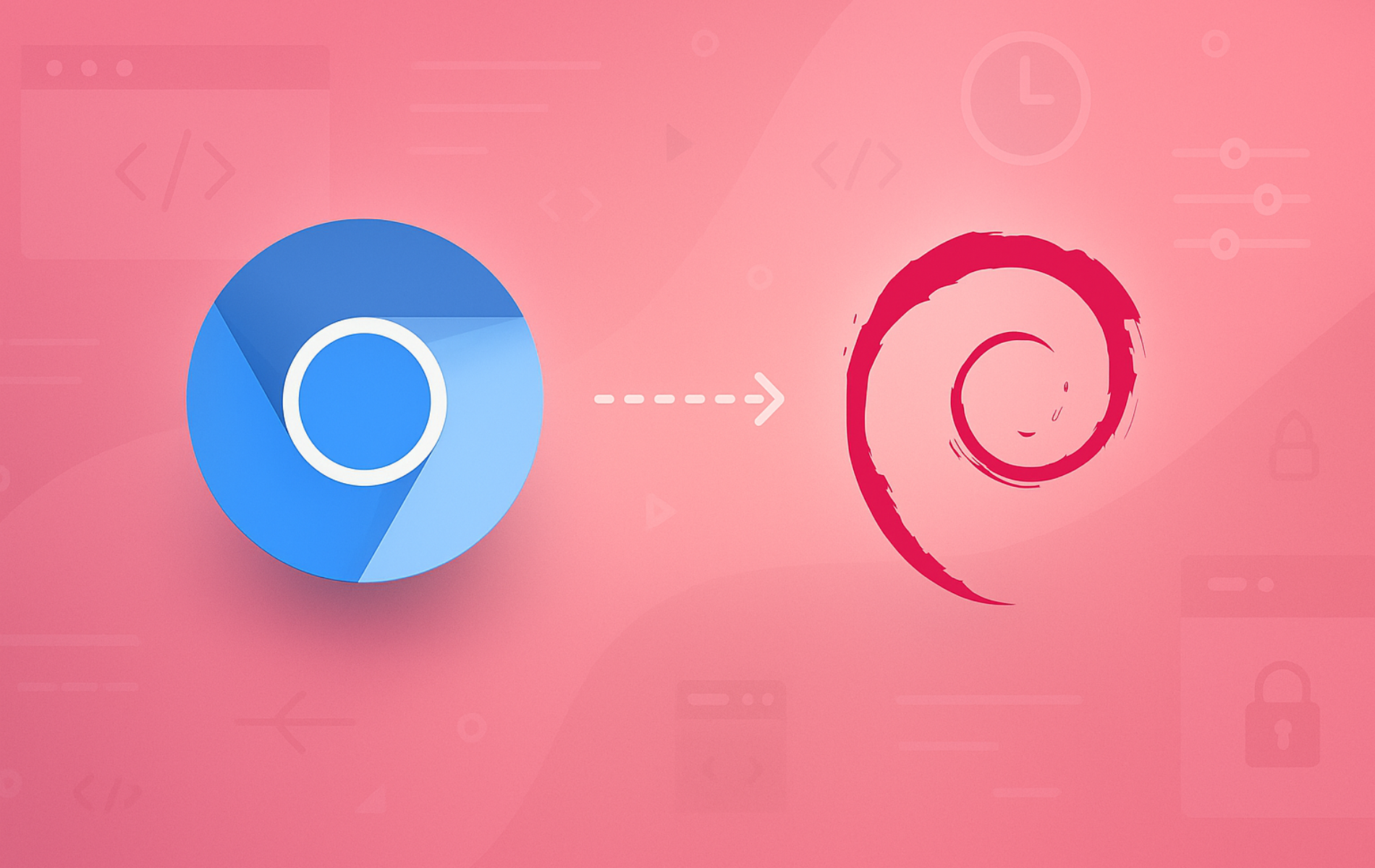Chromium Browser is the open-source foundation behind Google Chrome and several other popular browsers. It offers a fast, secure browsing experience with full support for Chrome extensions, making it ideal for users who want the Chrome experience without Google’s proprietary additions. For example, common use cases include daily web browsing, web development testing, and running privacy-focused configurations.
Specifically, this guide covers two installation methods for Debian: the APT repository method, which integrates with your system’s package management for automatic security updates, and the Flatpak method via Flathub, which provides application sandboxing and may offer newer versions. By the end, you will have successfully installed and verified Chromium, ready for everyday use.
Choose Your Chromium Installation Method
Both methods provide a fully functional Chromium browser, but they differ in update mechanisms, integration, and isolation. Review the comparison below to select the best approach for your needs.
| Method | Channel | Version | Updates | Best For |
|---|---|---|---|---|
| APT | Debian Repos | Stable | Automatic via apt upgrade | Most users who prefer system integration |
| Flatpak | Flathub | Latest stable | Automatic via flatpak update | Users wanting sandboxing or newer versions |
We recommend the APT method for most users because it integrates directly with Debian’s package management, receives security updates through standard system updates, and requires no additional frameworks. However, choose Flatpak if you specifically want application sandboxing or need a version newer than what Debian’s repositories provide.
Method 1: Install Chromium Browser on Debian via APT
The first method is to install Chromium using Debian’s default APT repository. Alternatively, for those seeking a different approach, check the next section and use Flatpak and Flathub to install Chromium on Debian.
Update Your System
First, we must ensure that our Debian system’s packages are current. Consequently, we will refresh the local package index to include the latest updates from the online repositories and upgrade all installed packages.
To accomplish this, enter the following commands:
sudo apt update
sudo apt upgradeInitially, the apt update command refreshes the local package index, and subsequently, apt upgrade installs the latest versions of all installed packages.
Once your system is up to date, proceed to the next step.
Install Chromium via APT
Next, with your system updated, run the following command to install Chromium:
sudo apt install chromiumTypically, this command instructs APT to download and install Chromium from Debian’s repositories. Additionally, the sudo prefix provides the superuser permissions required for system-wide installations.
Once the installation completes, verify the success of the installation by checking its version:
chromium --versionExpected output (Debian 13 example):
Chromium 1xx.x.xxxx.xxx built on Debian GNU/Linux 13 (trixie)
The version number varies depending on when you install and which Debian release you’re running. Debian 12 and 13 typically receive the latest Chromium releases (version 143+), while Debian 11 provides an older but stable version (around 120.x). If you need the latest Chromium on Debian 11, consider using the Flatpak method instead.
Method 2: Install Chromium Browser via Flatpak and Flathub
In contrast, Flatpak is a universal package manager that provides application sandboxing and works across different Linux distributions. This section covers installing Chromium from Flathub, the main Flatpak application repository.
You must install Flatpak before using this method. If you haven’t set it up yet, follow our guide on installing Flatpak on Debian before proceeding; the setup typically takes under five minutes.
Enable the Flathub Repository
To begin, add the Flathub repository to your Flatpak configuration. Flathub hosts thousands of applications including Chromium:
flatpak remote-add --if-not-exists flathub https://flathub.org/repo/flathub.flatpakrepoTechnically, this command instructs Flatpak to add Flathub as a remote repository if you have not already configured it. The --if-not-exists flag prevents errors if Flathub was previously added.
Install Chromium Browser via Flatpak Command
Once Flathub is successfully added, you’re now ready to install Chromium. Run the following command to download and install the browser:
flatpak install flathub org.chromium.Chromium -ySpecifically, the -y flag automatically confirms prompts, allowing a non-interactive installation.
After the installation completes, confirm the success by checking its details:
flatpak info org.chromium.ChromiumExpected output (truncated):
Chromium Web Browser - The web browser from Chromium project
ID: org.chromium.Chromium
Ref: app/org.chromium.Chromium/x86_64/stable
Origin: flathub
Version: 143.x.x
Launching Chromium Browser
Launch Chromium from Terminal
If you installed Chromium via APT, you can immediately launch it from the terminal with this command:
chromiumConversely, for Flatpak installations, use the flatpak run command instead:
flatpak run org.chromium.ChromiumHere, flatpak run tells Flatpak to start the Chromium browser using its unique application identifier.
Launch Chromium from Applications Menu
Additionally, you can launch Chromium from your desktop environment’s application menu:
- Go to Show Applications.
- Type “Chromium Web Browser” in the search bar.


Manage Chromium Browser
Update Chromium Browser
Run the update command matching your installation method to update your browser.
Update Chromium via APT
If you installed Chromium using the APT package manager, you can easily update the browser (along with all other software packages) using the following command:
sudo apt update && sudo apt upgradeFunctionally, the apt update command refreshes your local package index with the latest changes from repositories. Following this, apt upgrade installs new versions of all installed packages, including Chromium.
Update Chromium via Flatpak
However, when you use the Flatpak method to install the Chromium browser, update it by entering this command:
flatpak updateEssentially, the update command checks for updates in all enabled remote repositories and applies them. In the context of Chromium, it ensures that your browser runs the most recent version available on Flathub.
Remove Chromium Browser
Finally, if Chromium no longer fits your requirements, you can easily uninstall the browser using the method that matches your original installation.
Remove Chromium via APT
For example, if you installed Chromium through APT, remove it with the following commands:
sudo apt remove chromiumAfter removing Chromium, clean up any orphaned dependencies that were installed alongside it:
sudo apt autoremoveFurthermore, the autoremove command removes libraries and packages automatically installed as dependencies that you no longer need.
Chromium stores user data in
~/.config/chromium/and~/.cache/chromium/. To completely remove all traces, including bookmarks, history, and cached data, delete these directories after uninstalling. Back up any important data first.
Remove Chromium via Flatpak
On the other hand, for those who used the Flatpak method to install Chromium, use the command below:
flatpak uninstall --delete-data org.chromium.ChromiumThe --delete-data flag removes Chromium’s sandboxed user data stored in ~/.var/app/org.chromium.Chromium/.
After removing Chromium, clean up any unused Flatpak runtimes:
flatpak uninstall --unusedThis removes shared libraries and runtimes that are no longer needed by any installed applications.
Troubleshoot Chromium Browser
Chromium Fails to Launch
If Chromium fails to start or crashes immediately, missing dependencies may be the cause. Run the following command to check for broken packages:
sudo apt --fix-broken installAdditionally, try launching Chromium from the terminal to see error messages:
chromium --disable-gpuThe --disable-gpu flag bypasses hardware acceleration issues that can cause crashes on some systems.
Hardware Acceleration Issues
If Chromium displays graphical glitches or performs slowly, hardware acceleration may be misconfigured. Navigate to chrome://flags in the address bar and search for “GPU rasterization.” Try disabling this flag if you experience rendering issues. Alternatively, run Chromium with software rendering:
chromium --disable-gpu-compositingFlatpak Chromium Cannot Access Files
By design, Flatpak applications run in a sandbox with limited filesystem access. If Chromium installed via Flatpak cannot access certain directories, grant additional permissions using Flatseal or the command line:
flatpak override --user --filesystem=home org.chromium.ChromiumThis grants Chromium access to your home directory while maintaining other sandbox restrictions.
Conclusion
To summarize, you have successfully installed Chromium Browser on Debian, configured for automatic updates through either APT or Flatpak. The APT method integrates directly with your system for seamless security patches, while Flatpak provides sandboxed isolation and newer versions for Debian 11 users. To customize your browsing experience, explore Chromium’s settings and consider installing extensions from the Chrome Web Store. For additional browser options on Debian, see our guides for Firefox, Brave Browser, or Google Chrome.

